Wednesday 6 November, 2024
Tainan Rest Day – walking 13.6 kms. What a day, my feet are killing me. We walked miles, but it was fun. Mark had told us about a great little breakfast place. We found Jays and had a crepe like thing made with scallions, with extra egg and cheese. It was really good, it kept us going for most of the day. As we walked to breakfast an older Taiwanese lady commented that we did not have jackets on, she shivered indicating it was cold. I laughed and said it is hot we are from Canada and she laughed.
Then we headed out on our tourist day of Tainan. A lot of people carry their dogs on their scooters. Usually they are small dogs like the Taiwan Shibu. Today we saw a golden retriever balancing on the bike. My sister-in-law Beate has two goldens, I am not sure either of them would appreciate this.
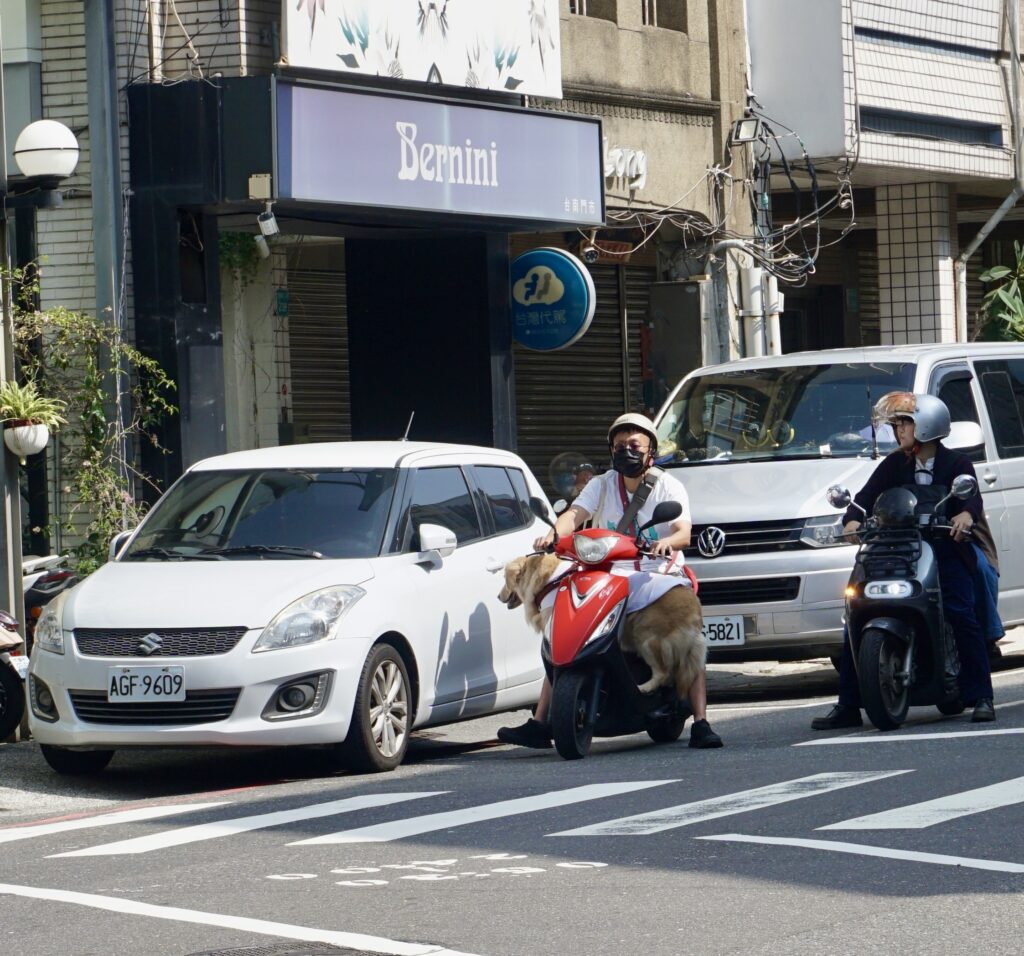
Tainan is the oldest City in Taiwan and it is celebrating its 400 year anniversary this year.
From 1624 to 1662 it was ruled by the Dutch they called the Island Formosa. The plan today was to visit Fort Provintia and Fort Zeelandia, both outposts of the Dutch East India Company.
We headed to Fort Provintia now named Chihkan Tower first, but got sidetracked by the Taiwan Design Expo at the old market hall. I have taken these photos for my nephews. Wayne, is a designer of clothing www.Sharp-Apparel.com. He would have loved this expo. The exhibition theme revolved around food and clothing. Creators from the food and fashion sectors collaborated from sourcing to creative output. They have crafted a time-limited virtual brand for Tainan. Pineapple fibre, mixed with oyster shells. Some of the artwork on the material was fabulous. One photo for my other nephew Justin. Love you both.
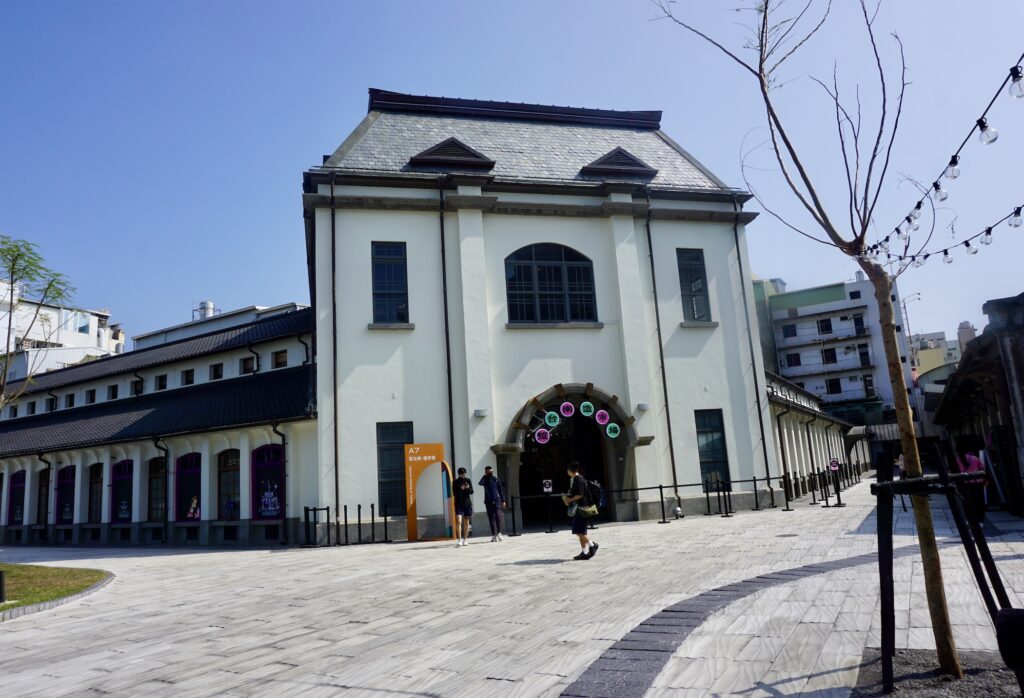
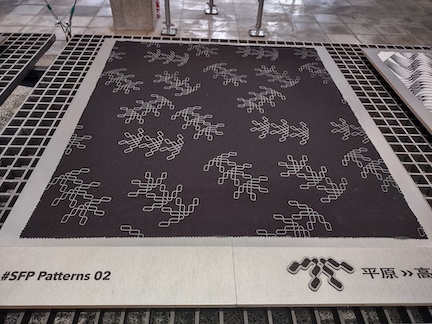
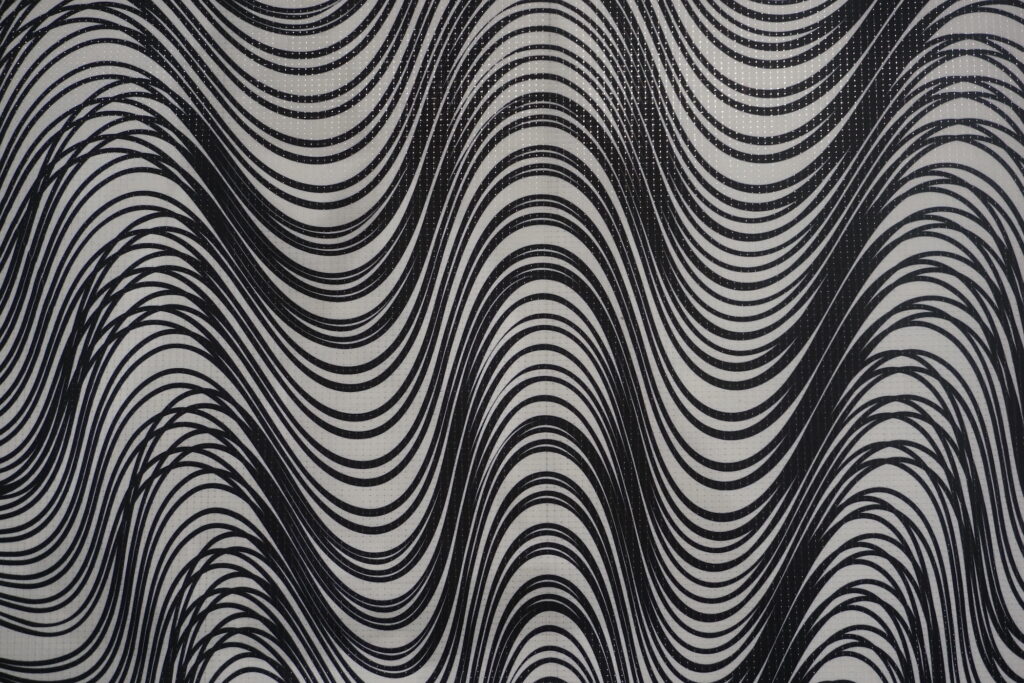
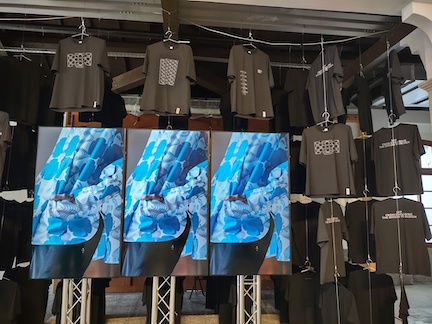
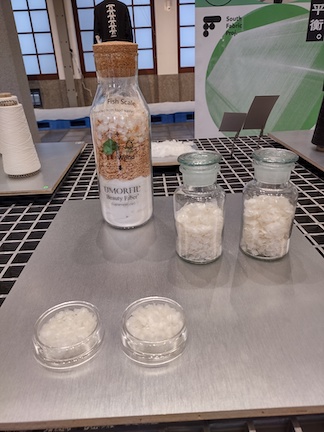
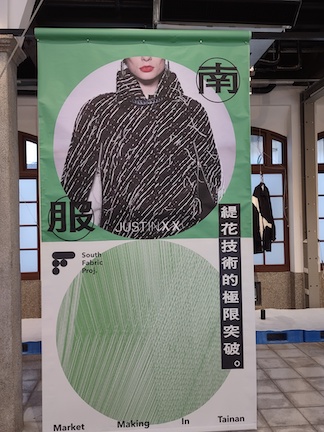
We headed to Fort Provintia which has been renamed Chihkan Tower.
In 1625 the Dutch colonists gave indigenous Taiwanese 500 metres of fabric in exchange for a piece of land in Chihkan where they built Provintia Street to accommodate businesses, marketplaces, warehouses and hospitals.
In 1653 the Dutch erected Fort Provintia as a defensive building. It was commonly referred to as Redheads Castle. The Dutch were defeated and removed from Taiwan in 1662.
An amazing structure with upturned eaves and red tiles. Chikhan Tower has proven to be a very versatile building over more than three centuries. It was a Western Castle (Dutch) a Chinese-style pagoda during the Qing Dynasty, an army hospital during the Japanese occupation and currently a museum testifying to the past glory. In 1983 Chihkan Tower was designated a Class 1 historic building. It is currently undergoing renovations to the main building.
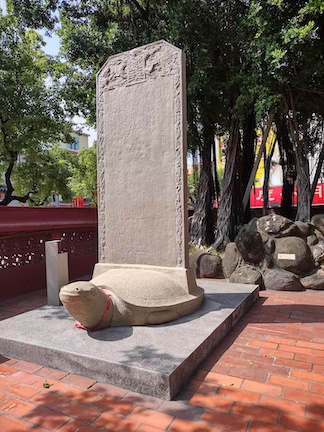
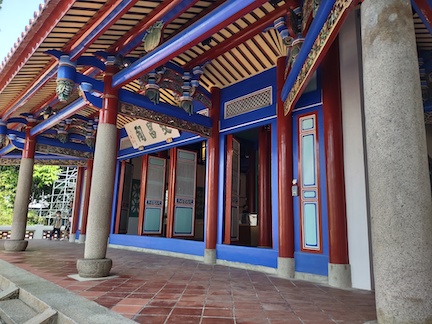
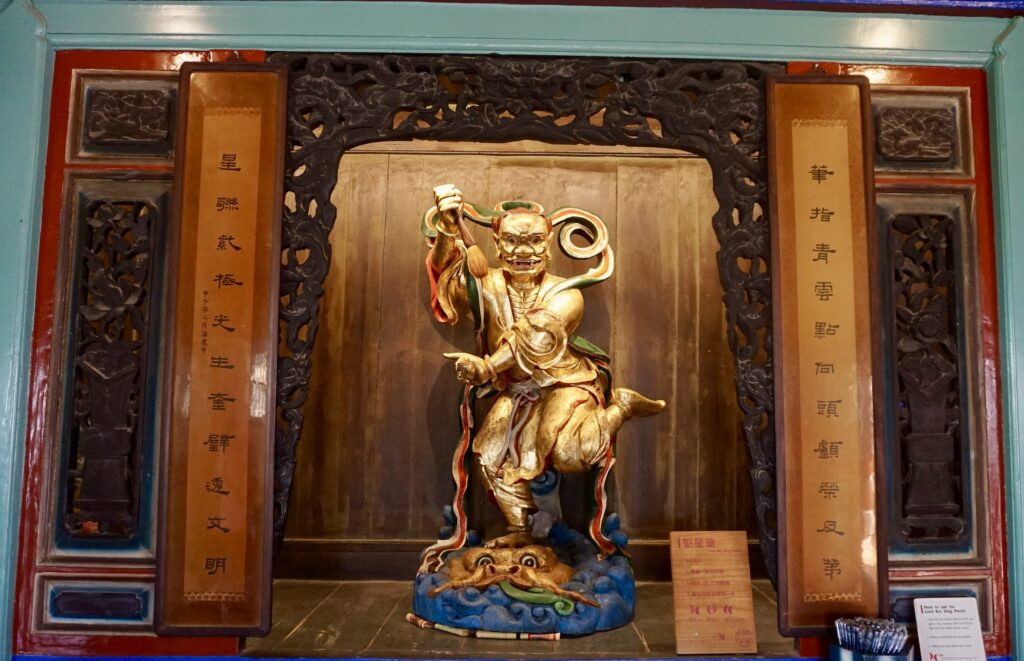
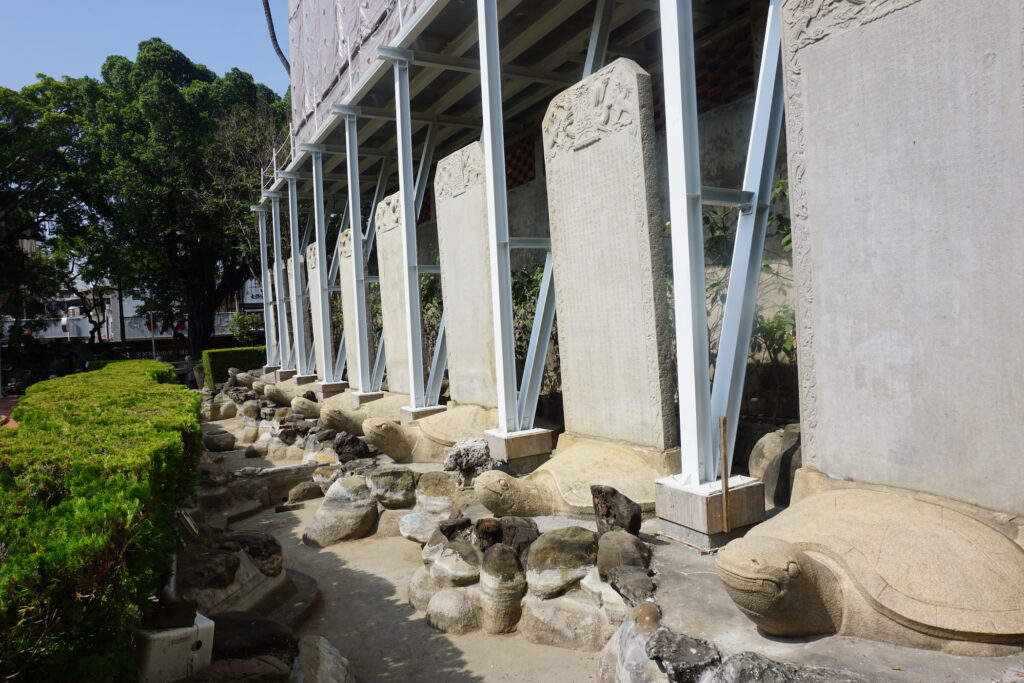
As we walked around the grounds there was a large Koi pond, Ralf got some fish food to encourage the Koi, so that he could take photos. We didn’t use it all and Ralf gave the remainder of the box to a young boy who thoroughly enjoyed feeding the fish.
As we continued our visit we passed the family again and the little boy, urged on by his Mom, gave us two small packets of crackers (Quinoa and salt crackers). So sweet of them.
In 1886 to encourage education the Taiwan county magistrate built Penghu Academy west of Chihkan Tower.
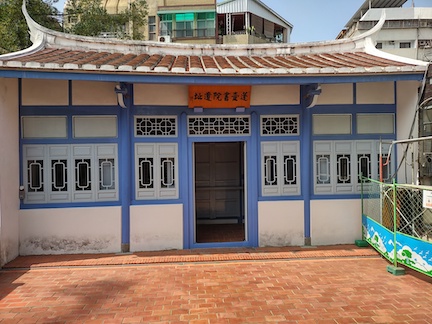
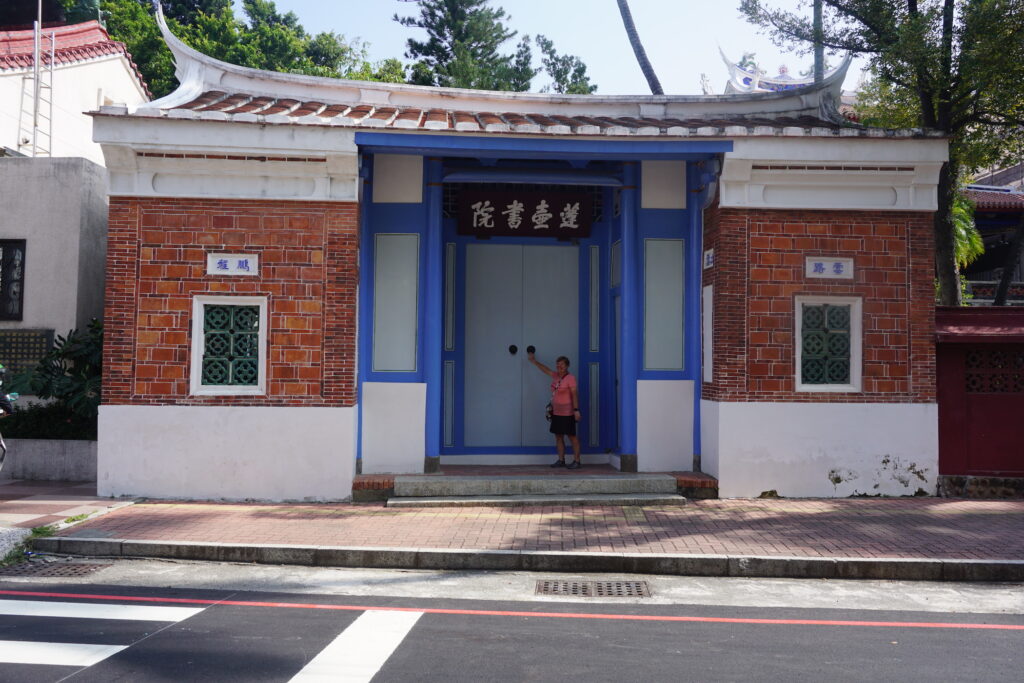
We walked through some of the old streets of Tainan towards Fort Zeelandia. There are lots of small alleyways that were all part of the old city. Then they spit you out on to a wide multi-lane road. You cross that road and disappear into back alleyways again with small eateries, fabric shops, and all sorts of little stores. Eventually we followed the canal to Fort Zeelandia, it was becoming very warm in the sun. We stopped for a cold drink and to cool down in an air-conditioned shop, then carried on.
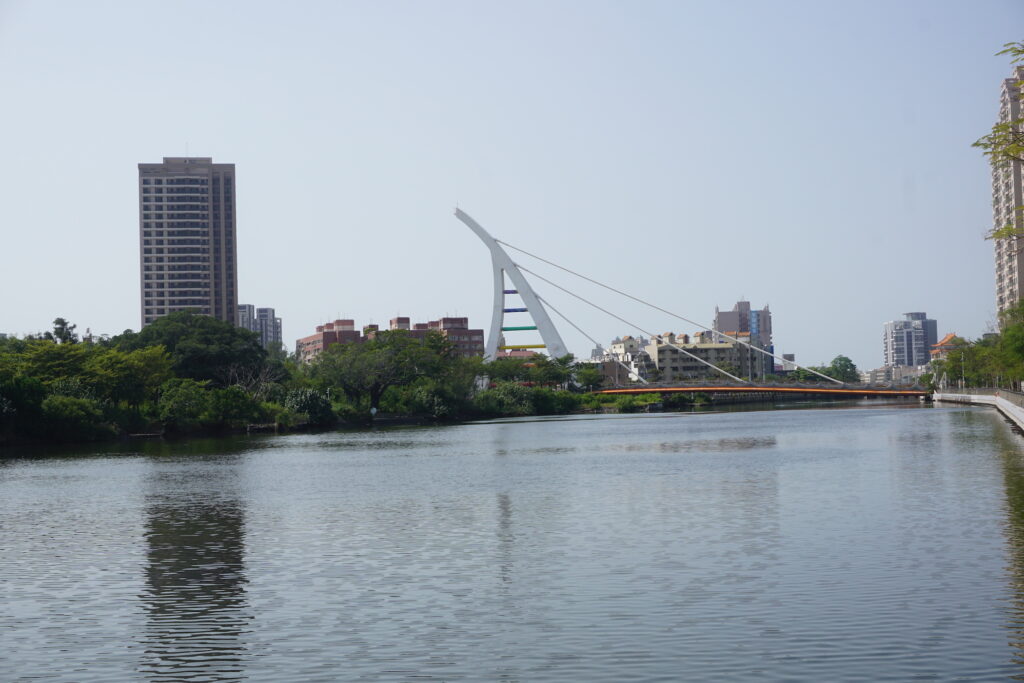
Fort Zeelandia now known as Anping Fort was built in 1624 by the Dutch and was known as Orange City. In 1627 it was renamed as Fort Zeelandia and the city walls were gradually rebuilt with bricks. The fort was 916 metres wide and over 10 metres tall, consisted of 3 stories and were surrounded by inner and outer walls.
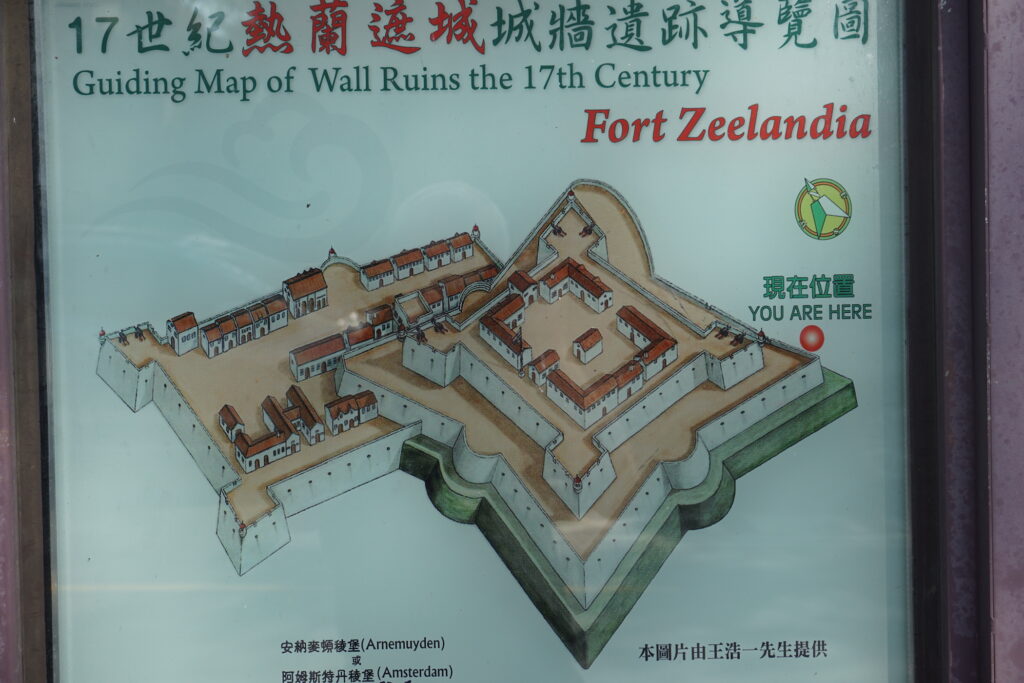
After Koxinga defeated the Dutch he renamed the area Anping Township. The Japanese rebuilt the Fort and renamed the Fort to Fort Anping. Today the only remnants of the Dutch period are the southern brick walls of the outer fort. It was a very popular place with school kids and tourists.
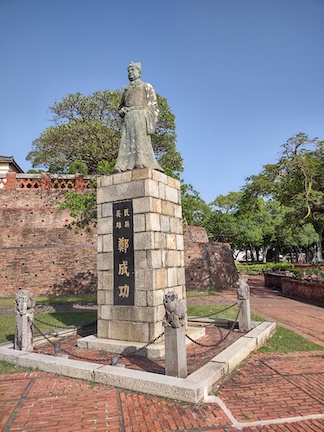
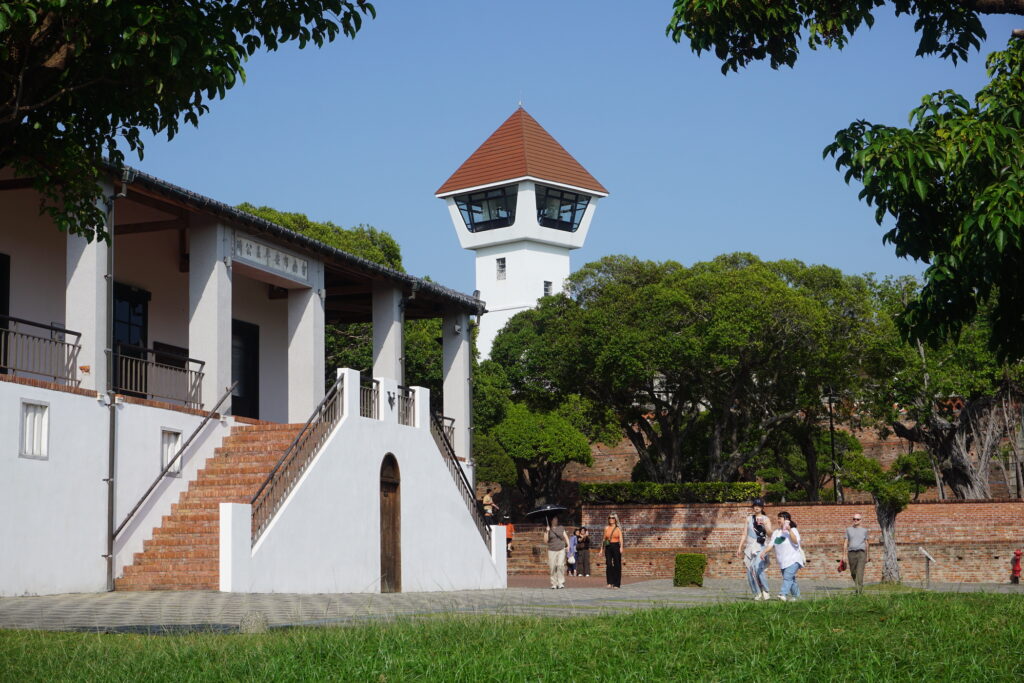
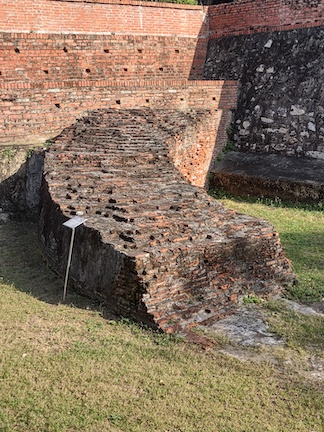
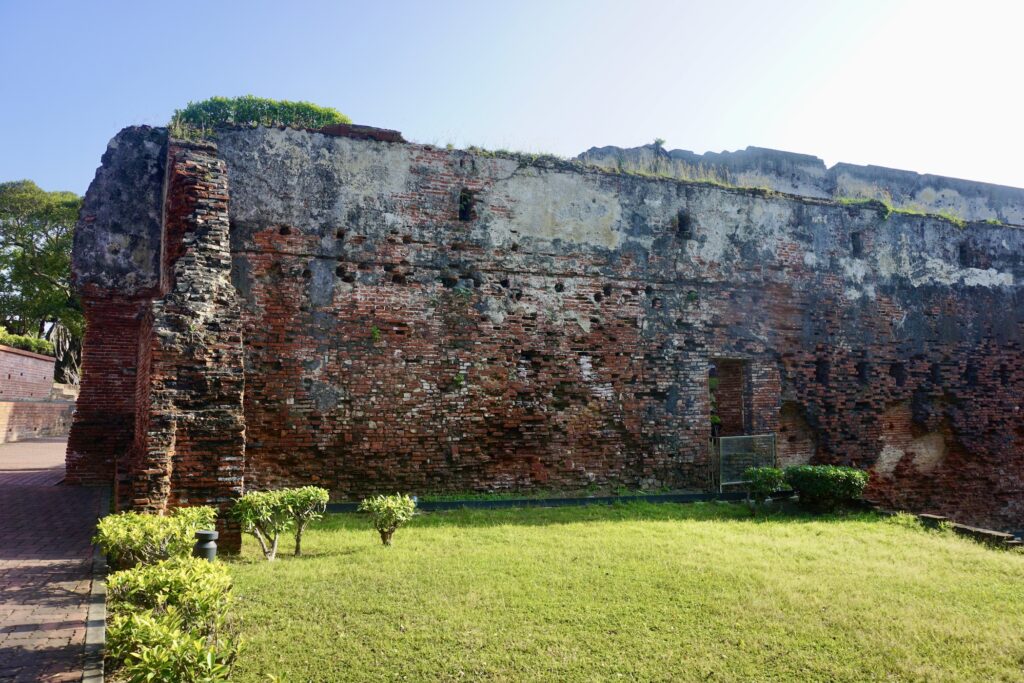
We, of course, climbed the tower.
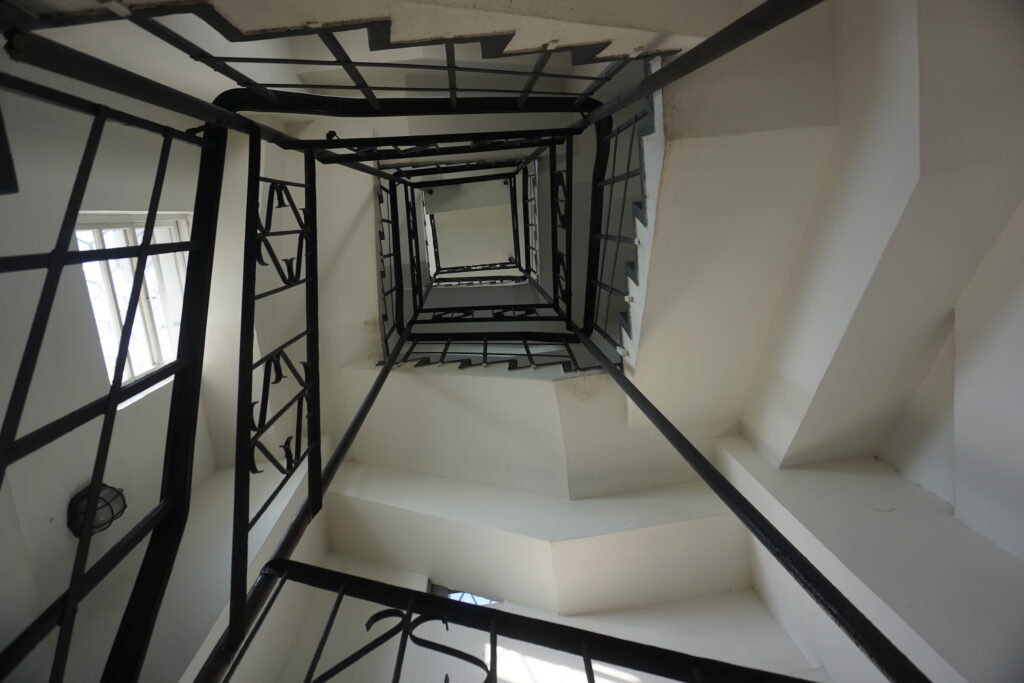
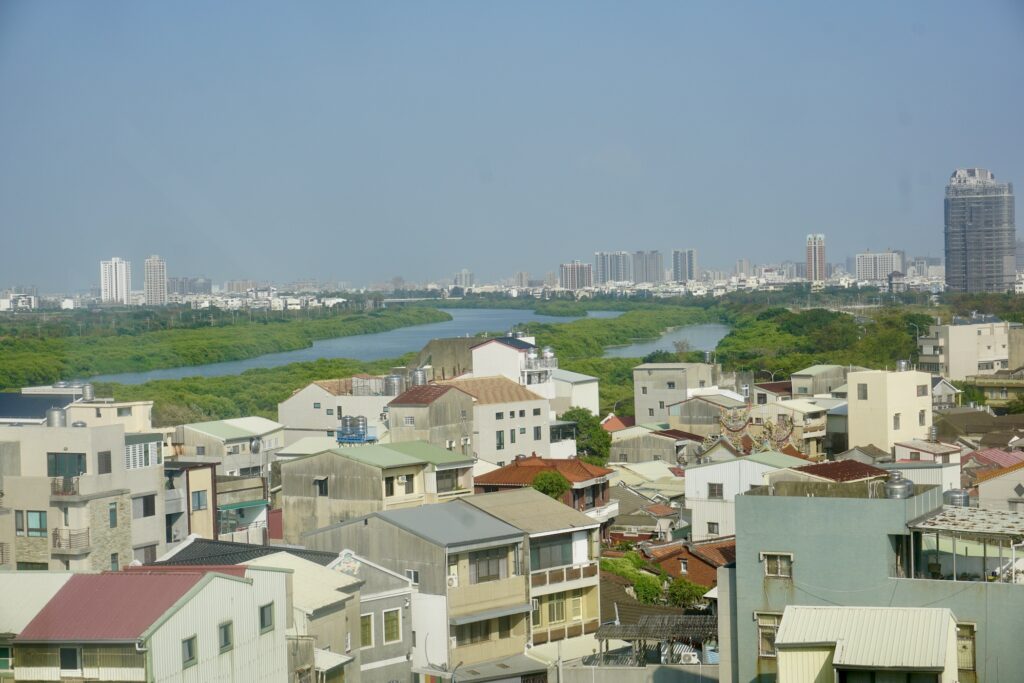
Last night, Mark had told us about another place which he really enjoyed. The place was Anping Tree House.
In 1865 the ports were officially opened to foreign traders. In a very short period of time there were foreign merchants and companies set up.
The British Tait & Co was set up and located in this area. The company mainly dealt with bulk goods such as opium, camphor and sugar. Opium was very popular in the 1800’s. After the Japanese occupied Taiwan the Japanese government took back the trading rights of bulk goods. Only Tait & Company continued to operate. Eventually the Tait & Co sold the company to the Taiwan Salt Making Corporation. The merchants building was converted into dormitories for the workers of the Taiwan Salt Making Corporation.
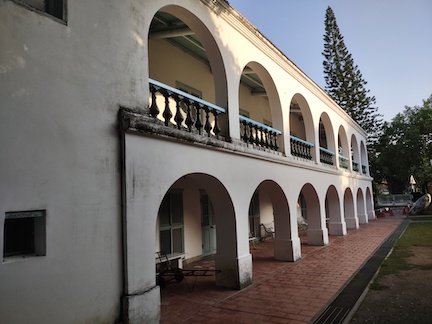
The Anping Tree house was the original warehouse for the salt storage. It had a floor area of over 4,600 square feet. The warehouse lay empty for many years and the surrounding Banyan tree filled the void ultimately forming a living roof and walls. It was amazing to see how these trees had taken over the building in a relatively short period of time. The area has been renovated to include walkways above the warehouse. It was awesome and well worth the visit.
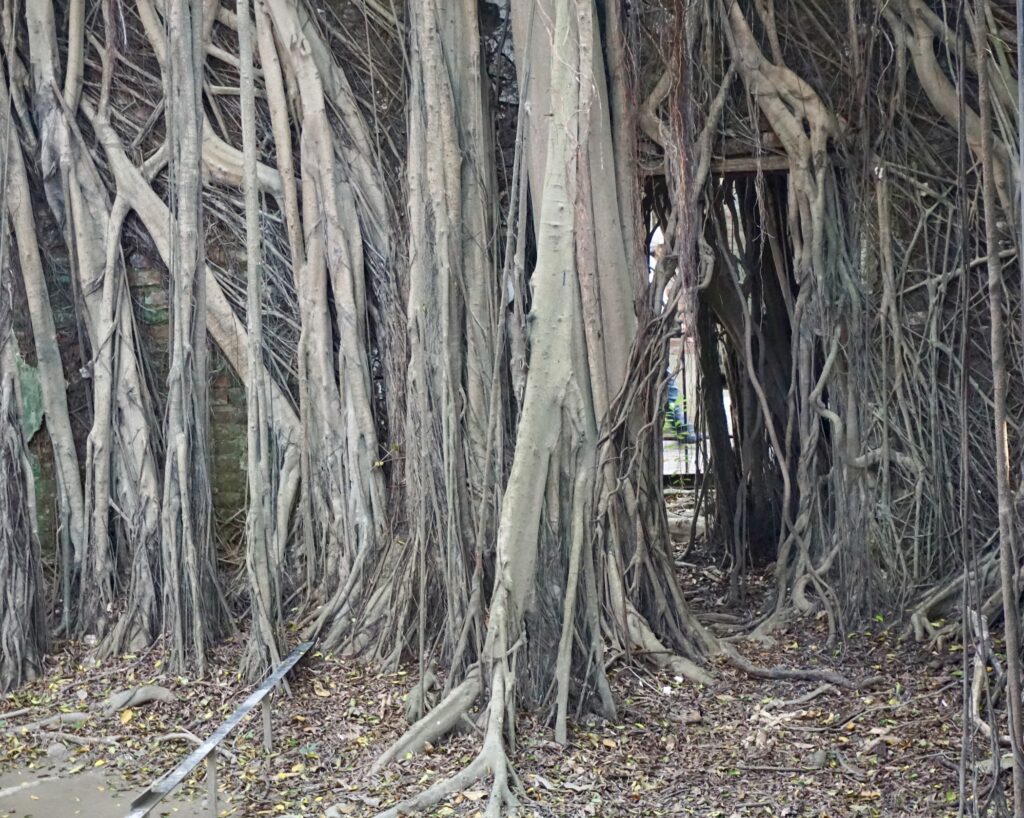
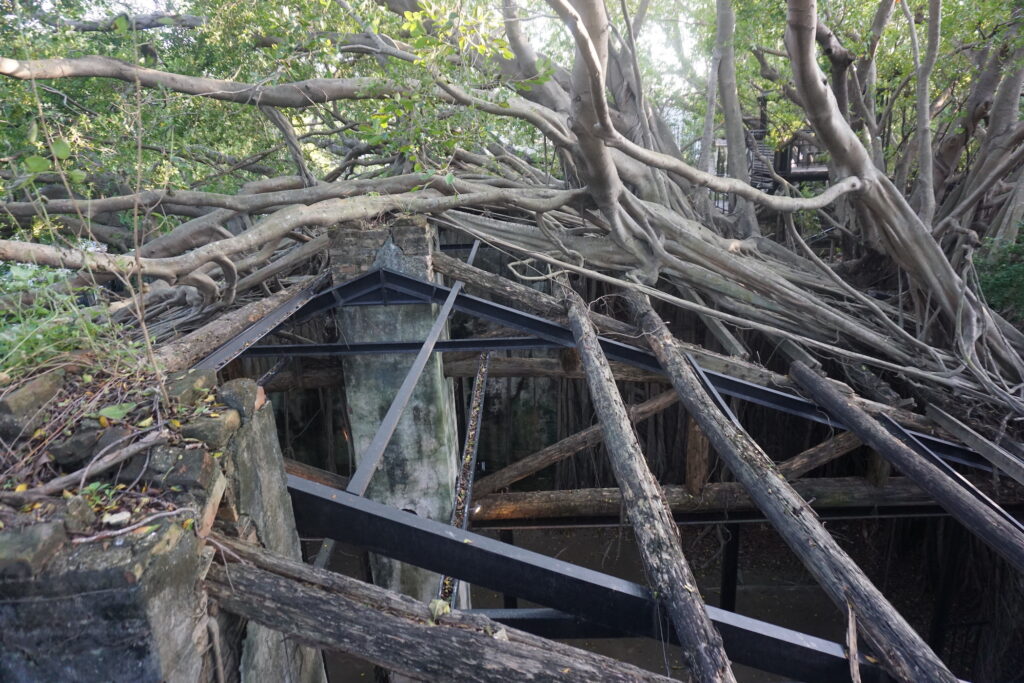
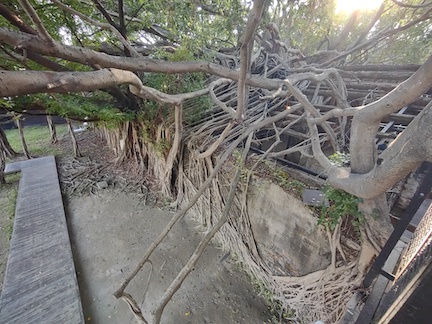
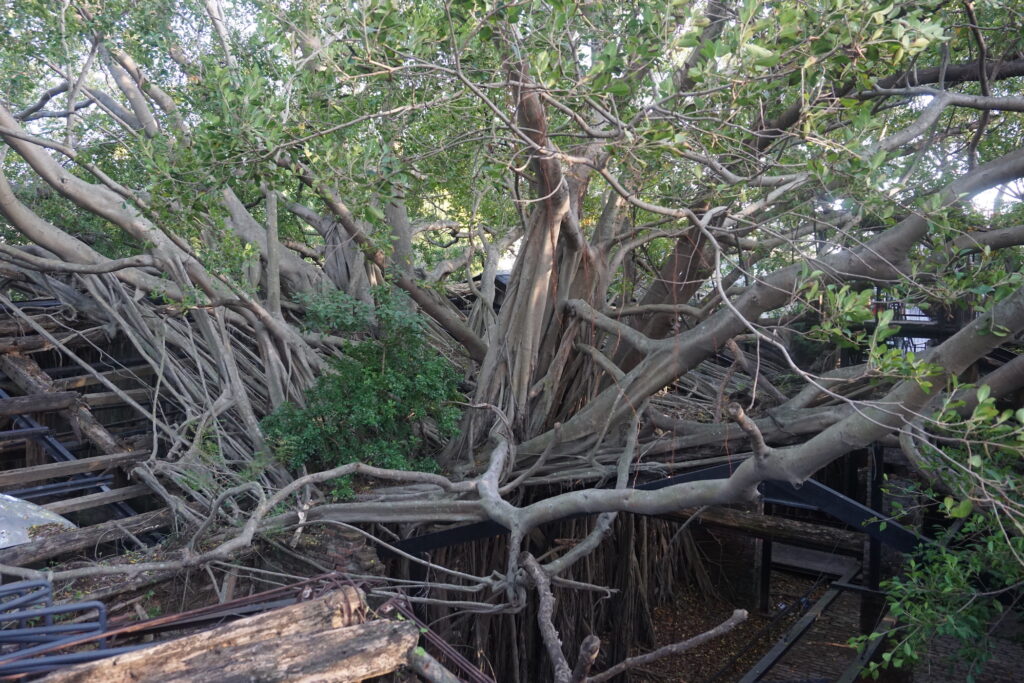
Banyan tree is a species that grows aggressively and it is an invasive species that will ensure that other epiphytic plants will not encroach on its territory. Banyan trees thrive in humid places because their aerial routes are capable of absorbing moisture from the air. The roots of the Banyan tree excrete an acid that dissolves limestone. Anpings Banyan Trees have utilized this characteristic to cling to the brick walls which were laid with a special mortar of ground oyster shell, syrup and glutinous rice. Obviously the tree love this mixture and have thrived.
All of the museum visits cost $70 Taiwan dollars which is about $3.00 each. Three museums for a total of $18.00 Cdn. A great day out.
